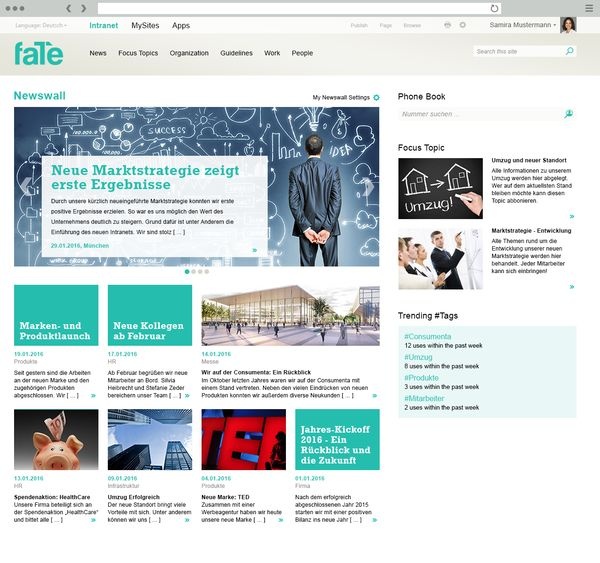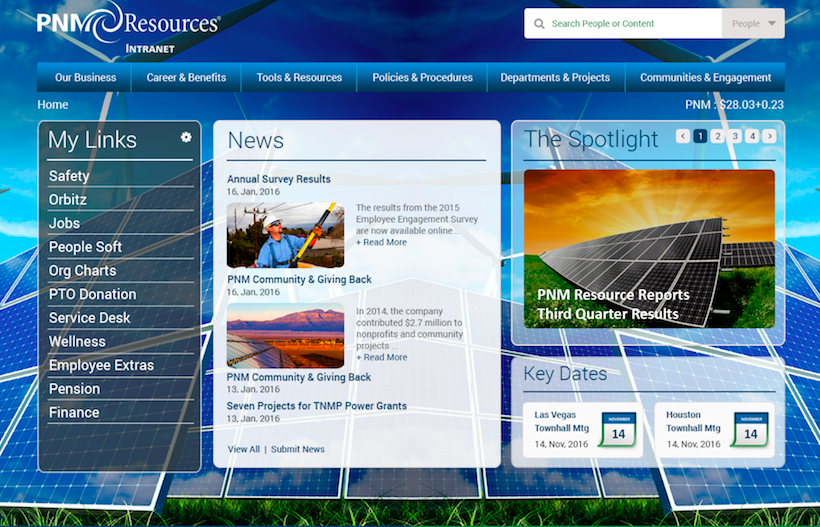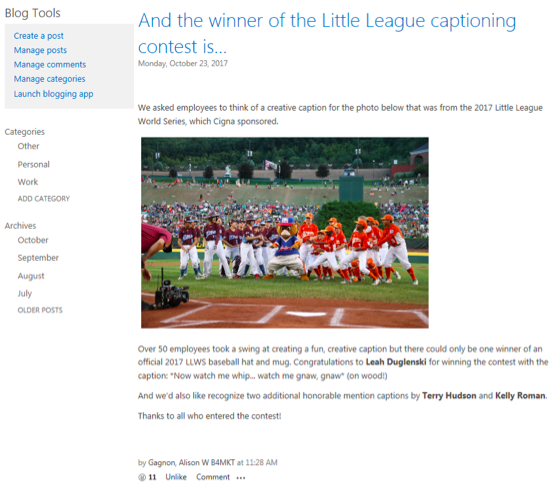Creating a Decentralized Intranet News & Content Team

Save time, save money – these are principal objectives of content management (and intranet news).
In short, content management describes the process of easily creating, managing and publishing online content and intranet news with neither programming nor technical skills. Easy and effective content management is achieved through the deployment of a content management system (CMS) that is either custom-built or purchased as an off-the-shelf solution.
With hundreds of content management vendors and systems – ranging in price from free to millions of dollars once implemented – choosing the right system can be daunting. Some organizations purchase a specialized CMS platform, such as Kentico, Sitecore or CrownPeak. Others have the content management system bundled in their technology platform, such as Microsoft SharePoint, IBM or Adobe.
Most large, global organizations now conduct business in one principal language (often it’s English). However, it’s also smart to allow different regions, countries, business units, etc. Conduct business in their own language, where necessary, especially if the dominant tongue differs from the principal language of the company.
The key to success is decentralized content management: centralized content management technology and policy, decentralized content publishing, ownership and management. In other words, the company provides the technology and policy (standards), the writers/owners control the actual words and intranet news on the site.
However, the technology is the easy part; without a well-defined content plan, you may be faced with an enterprise chorus of complaints that employees “can’t find anything!”
Employee News
PNM Resources is a medium-size power generation and transmission company in New Mexico and Texas with some 2700 intranet users of their enterprise intranet, iConnect.
With only one part-time manager / editor, the internal communications manager, the company benefits from a decentralized content model that deploys SharePoint as a central content management platform. The model and platform are supported by a central, comprehensive enterprise governance model and content management plan, and a decentralized content publishing model with dozens of content writers and publishers.
“The new governance model is almost like a checks-and-balance system,” says Dionne Gerety, Internal Communications Lead at PNMR. “The model is made up of different groups: executive champions sign the checks; the Editor-In-Chief runs the content; and the committees approve changes.”
As part of a greater intranet redesign and deployment of a new intranet, led by intranet consultants Prescient Digital Media, the pre-program for the launch of the new intranet included five months of content training, migration, testing, and tweaking, before the new intranet portal went live to all employees. An examination of the intranet revealed that a majority of content on the old intranet was no longer relevant or suitable for the new intranet. The strategic decision was made to not bulk migrate any content from the old intranet, but rather to train and support content owners to own their own content, and to manually migrate only the most relevant content.

PNM Resources intranet home page (Submit News at bottom)
Content was important, in fact, critical to the entire intranet redesign process. In fact, PNMR spent five months between the beta intranet and full site launch to allow the necessary time for training, tweaking and content publishing and migration. So PNMR began the process of creating a decentralized intranet news organization, before the new intranet launched.
The intranet content plan consisted of several people / change management parts: training existing content publishers; communicating the need to find new content publishers; and encouraging anyone in the company to become a news reporter. Additionally, with a lack of staff to create home page news, a program was created to encourage all employees to submit news and stories via a “Submit News” link below the News section on the home page.
After a few months, the home page editor was receiving between 15-20 news stories by employees every week. In addition to this level of content engagement news stories are also generating up to several dozen user comments per news story, delivering high employee engagement. Weekly “quick polls” have also further engaged the target audience: on average, about 10% of all employees take the weekly poll.
The content planning paid-off: the new intranet launch was a resounding success with rave reviews from both management and employees.
Key lesson: it takes a village (company) to create content.
Employee Blogs
Cigna is a worldwide, US-based, healthcare organization with more than 41,000 employees. Despite its large, Fortune 500 status, more than 25% of employees work from home.
To stay engaged and connected with other employees, and to share best practices across the enterprise, Cigna developed an intranet blogging platform on SharePoint (out-of-the-box). Cigna encourages any and all employees to become an intranet blogger. In fact, amazingly, Cigna has more than 12,000 active employee bloggers and readers.
“Blogging started casually, then became more corporate over time,” says Andrew Jayne, Senior Content Manager at Cigna. “And then it became less corporate, and more personal and individual, and less business focused.”
To gain active participation from employees, Cigna had to promote and prompt involvement, a process of several years. Clearly, change management, not the technology itself, has been key to garnering participation from employees. And employees are engaged: the average employee blog post generates 4-5 user comments. One blog post that I viewed had 60 user comments.
“Writing a blog is far different than a content page; most of it is informal, and conversational language (more brevity),” adds Jayne. “And it invites a more intimate conversation; invites them into a dialogue.”

Employee blog on the Cigna intranet
And not all the blog content is business focused. Some blogs are more formal with a business focus, others are lighter fare intended to engage employees, such as one that encouraged employees to submit “a poem that rhymes with orange” (which garnered more than 300 employee submissions). In fact, business content only comprises one-third of blog posts; community-related posts make-up one-quarter of all blog posts; personal blog posts comprise 42% of all employee blog posts.
A sampling of employee blog headlines (titles) on a Monday in October reveals a mix of business and casual content:
- “Asks” and “Learnings” – Tautological miscasts of dubious etymology Millennial Mondays
- The Myers & Briggs Personality Test And the winner of the Little League captioning contest is…
- Employee Giving Campaign: Step Out and Stop Diabetes
- Hairnets for a Good Cause
“Providing content that begs for interaction is what draws our readers out at Cigna and inspires other internal bloggers to follow suit,” adds Jayne. “When employees, regardless of band level, department or geography, see that they can interact with others on topics that provide real connection (not work-mandated collaboration), they’ll go out of their way to use internal social tools.”
Key lesson: combining business content with social content engages employees.
SEE THE BEST INTRANETS ON EARTH: Register for the Digital Workplace & Intranet Global Forum conference in New York City
